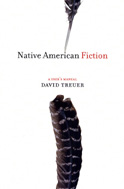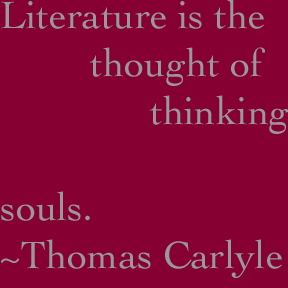Thinking Souls: Book Review: Native American Literature
Shannon Gibney reviews the controversial book of essays, "Native American Literature: A User's Manual," one of David Treuer's two new books on Graywolf Press. It proposes new ways of thinking about literatures of culture and identity.


When we hear the word culture, most of us automatically think of ethnicity – Black culture, Asian American culture, Native American culture. But in his new book of essays, Native American Fiction: A User’s Manual, novelist David Treuer argues for the recognition of a different kind of culture: that of literature. In fact, using seminal Native American texts as his starting point, Treuer makes the convincing and somewhat controversial argument that conflating Native American culture with literary culture for years has resulted in the stagnation of Native American literature.
“By far the most amazing thing about Native American literature is the reluctance of its creators and commentators to treat it as literature that exists within a field of other literatures,” Treuer writes in the last essay in the book, “The Non-Existence of Native American Fiction.”“What has remained a popular position is to think of literature as located within the sphere of life. It is not.”
“The phrase we hear so often that always begins ‘where I come from, stories…’ needs to be questioned,” he continues, referring to writers such as Louise Erdrich, Leslie Silko, and N. Scott Momaday, who have often presented their work as “authentic” cultural documents. “If novels say anything, they say it as text, and as such, the first step is to look closely at the words that comprise those texts and to move, ever slowly, ever outward, from there. This book is meant to be that first step.”
Treuer doesn’t so much take a first step as hack forward with a machete, leaving in his tracks the eviscerated remains of Leslie Silko’s Ceremony, James Welch’s Fools Crow, Sherman Alexie’s Reservation Blues, Forrest Carter’s The Education of Little Tree, and Louise Erdrich’s Love Medicine. He does warn us of his intentions in the “Author’s Note,” however: “Many of the good books dealt with here get what could be seen as fairly harsh treatment. The novels treated in this book, with two exceptions [Carter and Alexie’s novels], are all great novels, and this collection of essays takes issue more with how these books are interpreted (by their authors, critics, and their readers) than with how they are constructed. I believe that by not taking the literature seriously, by handing out praise where it is not earned, by obscuring the workings of a novel with claims or tradition not supported by the text, we run a great and terrible risk.”
This risk, Treuer explains, is that the imaginative possibilities of the literature will flag, while evaluative systems that place narrow notions of authenticity at the top will gain prominence. “What makes the intelligent interrogation of Native American literature difficult is the degree to which the literature has become a central part of an argument about authenticity. And to suggest, as some of these essays have suggested, that the elements with which the novels treated here are constructed, even though they might look Indian or seem cultural, are not in service to, and do not come from ‘the culture.’”
Although the detailed linguistic analyses of Ojibwe and Erdrich’s use of it in Love Medicine, as well as comparisons between various texts’ figurative and symbolic speech, can get a bit tiresome – even for the most intrepid and details-oriented reader — these same strategies provide devastating evidence for Treuer’s thesis. Some readers may not like the arguments that Native American Fiction makes, but they would be hard-pressed to refute them.
At the center of Treuer’s concerns, and what he identifies as the salient characteristic of most contemporary Native American texts and criticism, is what he calls “longing for culture.” The imaginative engine that moves most of these books, Treuer argues, is the characters’ desire to find their way “back to” a previously severed culture and community. He writes, “The longing for culture is linked to the project of self-recovery and self-discovery.”
In Treuer’s view, this one, singular preoccupation has made for a gradual flattening of the genre overall – again, a claim that is hard to argue, given Treuer’s eloquent and well-supported approach. Treuer asks, in the essay “Smartberries,” “Why do we want books to be culture or pantomime it? …Is it that, very unlike the characters inside the story, these books are an important, and sometimes the only, point of contact between readers (both Indian and white) and Indian culture and community?”
The point of all this is that readers, writers, and critics need to pursue more educated and critical engagements with Native American literature. So many of the problems Treuer finds in this literature, and in its conflation with culture, stem from an unwillingness to investigate it seriously, he argues. He expounds on this idea in “How to Love/Hate an Indian,” where he uses a racist ad that ran in a South Dakota newspaper in 1999 to show that love and hate of what is perceived as authentic Indian culture come from the same place: ignorance. “…it doesn’t seem necessary to have a true command of our culture and history to love us, because love, like hate, is based on an idea of us. …It seems to me that in order to get anywhere, both those who love us and those who hate us should take a long, discerning look at our history and our literatures and quit treating Indians as a playground for the imagination; as the ground on which the emotions they have been trained to have (love, hate, respect, disdain…) are let loose to play. Or maybe that’s the point: we are inconsequential, beside the point of daily life. …It is not necessary (and this is the root of our appeal) to be informed, actually informed, about our realities.”
In this way, as I made my way through the collection, I saw that the assertions put forth in Native American Fiction are not so controversial after all. Treuer’s call is simply for all of us involved in literary culture to take more responsibility for what we give to and take from it – to acknowledge the power each of us has to either widen or narrow the imaginative possibilities of our time. Once I realized this, I understood why the collection is encountering so much resistance.
Now go on to read a review of David Treuer’s novel The Translation of Dr. Apelles. And don’t miss your chance to add your voice to the mix – the Thinking Souls online book club is the place to hash out both formed and incipient ideas about art and writing in Minnesota!
Next month: We’ll talk to Aletha Little of the Givens Foundation for African American Literature about their work promoting and preserving Black literature. Pick up a copy of Harriet Jacob’s Incidents in the Life of a Slave Girl, an American classic and a Givens Foundation re-issue, for September book club discussion.